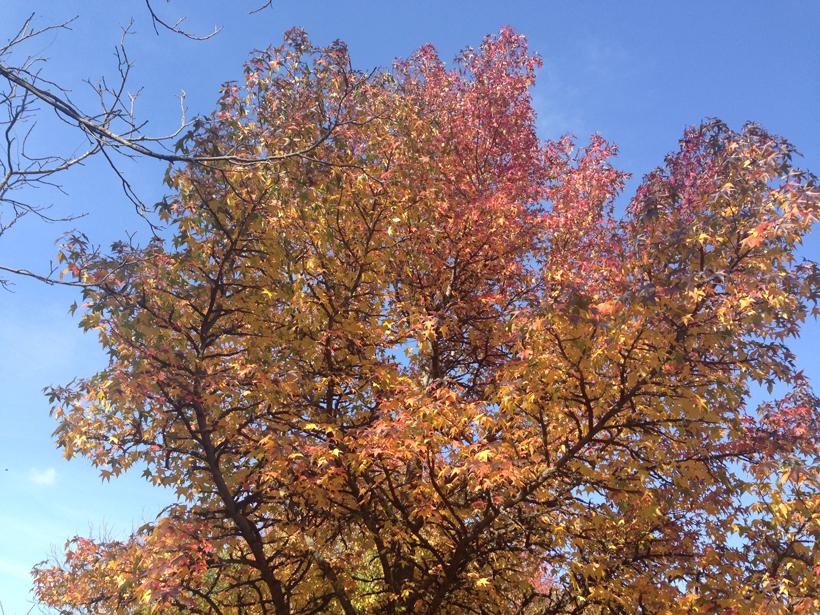Arboreta, places where trees and shrubs are cultivated, may be able to do more than provide scenery to joggers and bikers. These collections of trees could also provide a unique scientific opportunity to understand climate change.
“The arboretum is a really great place to do this because there are tons of tree species,” said Ailene Ettinger, a plant ecologist at Tufts University in Medford, Mass. “They’ve been growing there for hundreds of years.”
Looking at a variety of trees in arboreta could reveal clues about which trees grow faster or slower when temperatures warm.
Ettinger and fellow scientists spent 2014 taking advantage of the vast diversity of tree species at the Arnold Arboretum of Harvard University in Boston. They drilled into trees to remove thin cylindrical core samples that contain a record of yearly tree growth and compared them to historical climate records.
Their goal was to understand whether trees’ traits can predict how they will respond to warming temperatures. The team found that looking at a variety of trees in arboreta could reveal clues about which trees grow faster or slower when temperatures warm.
Tons of Trees
Previous studies show that trees in nature can respond very differently to a warming climate: Some grow faster, others grow slower, and some are unaffected. But it’s been hard to understand which tree traits—including leaf shape and size, blooming, and budding behavior—best explain why they respond differently. So far, studies trying to answer this question have been limited because they look only at small patches of forest and single species.
The researchers think arboreta could help provide answers because they house thousands of species from all over the world. Ettinger and the other researchers found that some traits, like the thickness of leaves and tree height, may predict how a tree will respond to climate change. They presented their research Monday at the American Geophysical Union Fall Meeting in San Francisco, Calif.

Testing Traits and Temperature
To tease apart how tree characteristics could explain their response to temperature, the team collected core samples from 361 trees across 85 species. Using weather data from a local station, they compared the trees’ growth to temperatures going back to 1900.
They sought to investigate whether a tree species’ wood density, the ratio of leaf mass to its surface area, and the timing of flowers, buds, and leaf shedding during the fall explained why different species’ growth sped up or slowed down because of changing temperatures.
Although their preliminary work focused on the pines and firs in their sample set, a few things popped out to Ettinger.
“I was surprised that summertime temperatures were so important,” she said. In the cold climate of Massachusetts, she expected that warming temperatures would give trees a growth boost. But she saw that most of the conifers slowed their growth rates as summer temperatures got warmer over the years.
Another surprising relationship was that trees with thicker, denser needles didn’t grow as fast as others when temperatures warmed. You’d expect to see trees with thinner leaves lose water more rapidly and be hurt by hot temperatures, Ettinger explained.
She noted that more research is needed to determine whether these relationships hold true in broadleaf species.
From Arboretum to Forest
The method seems like “a good way to get some experimental evidence for how trees respond to warmer temperatures,” said Janet Prevéy, a U.S. Forest Service scientist who was not involved in the study. However, it remains to be seen whether findings from arboreta will scale up to wild forests.
Ettinger and the team plan to add more species to their study and to start considering how the trees’ home climate plays a role in their growth. Eventually, they will test the results they get from the arboretum in unmanaged forests.
“The ultimate goal is to help natural resource managers and scientists do a better job at predicting how your species or your forest will respond to future climate change,” said Ettinger. “That’s a real challenge.”
—Ula Chrobak (email: [email protected]; @ulachrobak), Science Communication Program Graduate Student, University of California, Santa Cruz
Citation:
Chrobak, U. (2016), How do trees respond to climate change? Clues from an arboretum, Eos, 97, https://doi.org/10.1029/2016EO064791. Published on 13 December 2016.
Text © 2016. The authors. CC BY-NC-ND 3.0
Except where otherwise noted, images are subject to copyright. Any reuse without express permission from the copyright owner is prohibited.

